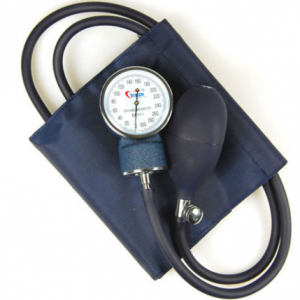Contents
- 1 Understanding Sphygmomanometers
- 1.1 What is Sphygmomanometer and types of Sphygmometer
- 1.2 Types of Sphygmometer
- 1.3 Digital sphygmomanometer
- 1.4 Conclusion
- 1.5 Share this:
- 1.6 Related
Understanding Sphygmomanometers
“Health is wealth” is a cliche heard repeatedly throughout the world. As overused as the phrase is, it has a great deal of truth to it. Being healthy is the first and most important step to having a happy life, because without good health, nothing else can be accomplished. One of the key aspects to maintaining good health is early diagnosis, meaning that one notices a problem early on before it has progressed further to something that cannot be treated. In order to accomplish early diagnoses, one needs the necessary tools. One of these important devices is the sphygmomanometer, which is the technical name for a blood pressure monitor.
What is Sphygmomanometer and types of Sphygmometer
Before explaining what exactly this device does, it is important to establish that mercury sphygmomanometer is an extremely meaningful aspect of health. High blood pressure is correlated with higher chances of stroke and heart disease, making preventing high blood pressure very important. Because high blood pressure does not have many other signs that can be easily discerned, a sphygmomanometer is needed to ensure that blood pressure is within normal ranges.
 A sphygmomanometer is in reality a very simple device to use. It consists of a cuff that is usually attached around the arm and inflated, and a device that measures the pressure created by the cuff. To measurements are given, the systolic and the diastolic pressure. The systolic pressure, the higher of the two numbers provided by the device, measures arterial blood pressure when the heart is contracting. The diastolic pressure, the lower number, is the arterial pressure between heart contractions. The two numbers combined give a picture of the health of the individual.
A sphygmomanometer is in reality a very simple device to use. It consists of a cuff that is usually attached around the arm and inflated, and a device that measures the pressure created by the cuff. To measurements are given, the systolic and the diastolic pressure. The systolic pressure, the higher of the two numbers provided by the device, measures arterial blood pressure when the heart is contracting. The diastolic pressure, the lower number, is the arterial pressure between heart contractions. The two numbers combined give a picture of the health of the individual.
It is sometimes confusing to understand exactly what these numbers mean when one reads them from a sphygmomanometer. Systolic pressure is considered to be normal if it is below 120, and diastolic is considered normal below 80. Anything higher than these numbers suggests high blood pressure to an extent, and can be dangerous. Of course, there are ranges of high blood pressure. A systolic pressure between 120 and 139, and diastolic between 80 and 89 reflects prehypertension, which is the stage before actual high blood pressure. A sphygmomanometer can help catch blood pressure in this stage, and with this early diagnosis one can change his lifestyle to prevent any increases in blood pressure and thus prevent future complications. It is for this reason that it is so important to own a sphygmomanometer and do routine self-checkups with it. Once systolic and diastolic blood pressures increase above these ranges, they are officially categorized as high blood pressure. Once these stages of high blood pressure are reached, it is vital to make changes and monitor blood pressure intensely to make sure that it is not increasing. Hopefully it can be brought down eventually to a healthy range.
One might wonder why low blood pressure is not discussed above. There are no real accepted ranges of low blood pressure. Some people simply have low blood pressure due to no fault of their own, and it is truly not a sign for concern. This only becomes a sign when symptoms of illness are experienced, such as dehydration or nausea, among others. If these do occur, then it may be necessary to visit a doctor about the low blood pressure. Otherwise, it is not a big problem.
Types of Sphygmometer
Now that the importance of sphygmomanometers has been explained, one must understand the different types of the devices. Indeed, sphygmomanometers come in all shapes and sizes, and each functions slightly differently. The most basic type of the device is the manual Mercury sphygmomanometer.
Mercury sphygmomanometer
 This type does not have a digital screen to display the systolic and diastolic pressures. Instead, a person must utilize a stethoscope to blood pressure. To do this, the person must look at a mercury column simultaneously while listening to the stethoscope. The procedure itself is relatively complicated, and as such should not be performed by normal people as they may make mistakes and thus get incorrect readings of their blood pressure. These types of sphygmomanometers should be used by health professionals who have had training. These manual mercury sphygmomanometers are probably the most popular blood pressure monitors in use as they do not require calibration and, because the readings are taken physically by a human, have very low chances of error if used correctly. If one is buying a sphygmomanometer for home use, it is best to stay away from this unless someone in the family is a medical professional. If one believes that they have sufficient skill with the device, however, then this is the best device to purchase, as it is the tried and true method of blood pressure monitoring.
This type does not have a digital screen to display the systolic and diastolic pressures. Instead, a person must utilize a stethoscope to blood pressure. To do this, the person must look at a mercury column simultaneously while listening to the stethoscope. The procedure itself is relatively complicated, and as such should not be performed by normal people as they may make mistakes and thus get incorrect readings of their blood pressure. These types of sphygmomanometers should be used by health professionals who have had training. These manual mercury sphygmomanometers are probably the most popular blood pressure monitors in use as they do not require calibration and, because the readings are taken physically by a human, have very low chances of error if used correctly. If one is buying a sphygmomanometer for home use, it is best to stay away from this unless someone in the family is a medical professional. If one believes that they have sufficient skill with the device, however, then this is the best device to purchase, as it is the tried and true method of blood pressure monitoring.
Aneroid sphygmomanometer

Another type of manual sphygmomanometer is the aneroid sphygmomanometer, which uses a slightly different method to measure the pressure created by the cuff. Although the process of using this device is similar to that described above, and thus still requires skill, the device itself is not as reliable as it requires occasional calibration. If one uses this without calibrating first, the he will get an incorrect picture of his blood pressure. These are sometimes less expensive, but are thus more prone to error as well. If one makes sure to take good care of this device and calibrates it often, and if he is skilled in using the device, then this is a good option. For the general populace, however, it is better to avoid this type of sphygmomanometer.
Digital sphygmomanometer
Finally, a increasingly prevalent device is the digital sphygmomanometer. These devices are almost completely automated, and all that is required of the patient is usually the placement of the cuff around the arm. These are by far the easiest sphygmomanometers to use; they have a digital screen that displays the systolic and diastolic pressure, making physical skill here completely unnecessary. Of course, these devices also are less accurate. For a person that is attempting to screen blood pressure at home often, this is likely the best device, as what is lacked in precision is made up for with ease of use. For normal screenings this is a great idea. If the pressures presented by the digital sphygmomanometer are constantly elevated, then one can go to a professional to have the blood pressure checked out, and then go from there. However, if one is very concerned about his blood pressure and requires accurate screenings then it is best to stay away from this and use the manual mercury sphygmomanometer, even though it may be more difficult.
Conclusion
In summary, the sphygmomanometer is a great invention that everyone should be constantly using. It provides vital information for early detection. Using the information provided in the article, one can decide on the best sphygmomanometer for their particular situation. Using the device for blood pressure monitoring can greatly change a persons life, and thus device is a great investment.


